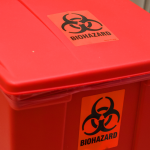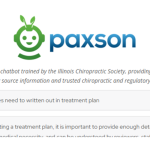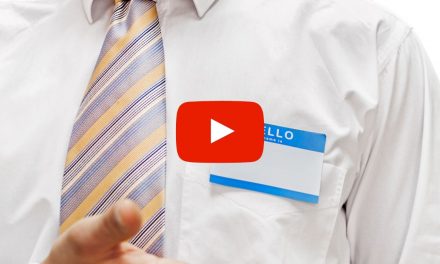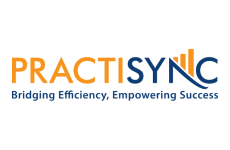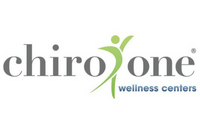
Key Tips for Separate and Distinct E/M and CMT
Editor’s Note: The ICS has an on-demand course with Dr. Gwilliam covering the entire -25 modifier issue and all of the tips here.
Stop denials for same-day E/M and CMT. Dr. Gwilliam reveals key tips on how clear separation of notes strengthens modifier 25 and proves each service stands on its own for proper payment.
Referenced Links:
E/M and CMT Bundling Prevention Toolkit
Paxson (ICS Trained AI)
Transcript:
Marc:
So Dr. Gwilliam and I are doing a lengthy series on the whole problem surrounding examinations performed on the same day as a chiropractic adjustment, and so E/Ms and CMT same day, separate and distinct, and all of the arguments and all the problems that doctors are running into with these being denied and the challenges that come into play. But here’s one of my problems with this, and one of the things that I rant and rave about all the time is even Blue Cross, Blue Shield of Illinois, they have a quote inside of their chiropractic policies, and it says to bill for an evaluation and management service, the complete CPT guidelines must be met for each service. The service must also be separately identifiable and distinct from any other service you perform on the member, that’s the patient that day. So perform on the patient that day, that’s what they say. So they say it’s possible inside of this. But I think this brings up a really important point, Dr. Gwilliam, and that is this separately identifiable and distinct, right? So what is one of the things that they could do? What is one of the tips we talked about all of the precursor information? I think we got like five videos that talk about this precursor information, but now we get into these tips and what the doctors can do in order to drive a stake in the ground or create and tell the appropriate story, both on the claim form and in their documentation. What’s one of the key things they can do out of the gate?
Dr. Gwilliam:
You know, we see these denials, right? And the statement by the payer is we can’t see a separate E/M from your CMT. It looks like the same thing to us. And so what we want to do is laid out in front of them as two separate things. We want them to be looking at the record and see a CMT over here and an E/M over here, not both of them in one place. And have to pick out the pieces that belong to each service. So to really, really strengthen that, one of our tips that I haven’t seen in chiropractic records very often. I’ve seen it on a few occasions, and I think it’s huge and very powerful. It is to simply separate the notes. If there’s an E/M done on the same day as a CMT, make it its own note. And I’m going to back that up with guidance given to us from various payers. There’s this payer network, some guidelines out of Oregon, and I thought they were very, very clear. And I like that they more or less told us how to make sure anybody looking can see that the exam is separate. They said the documentation, and this is a quote, the documentation of the procedure and the documentation of the significant and separately identifiable E/M service, must be clearly separate and distinct in the medical record to fulfill the requirement of separately identifiable.
Separate identifiable is the definition of the two five modifier. So if you put the two-five modifier on an E/M, you’re saying it’s separate, identifiable. It has to be clearly separate and distinct in the record. You can’t just argue. Well, you know, I know I wrote down some information over here about getting ready for adjustment, but I also did these orthopedic tests. And then down here in the planning, I talked about how I plan to do the next CMT, but I also have some plans for some other services over there. You don’t just drop it all into the same note; make it clearly separate. And the way that this, this payer advises, is to put it under its own subheading. So my note might be a SOAP note, but then it says, and here’s the E/M service, and it’s got its own little section. But I want to go a step further. Let’s, let’s go even farther. And let’s just put on a new page. Let’s, let’s do a note that says, here’s all the things I have to do to do the CMT today. And then we have a whole new note on page two that says, here’s the evaluation management service. And we document all the elements of the evaluation management service, which, the next question is, well, what’s in there that’s not over there. It’s everything that’s not over there. It’s anything that’s not related to the CMT service. That’s my takeaway from those payer guidelines: that they say we can justify the E/M if it’s documented with an E/M, and if it’s totally separate. So we separate it, and if we separate it, we’re like we’re giving them exactly what they’re asking for. That’s so much harder for them to claim it’s all bundled together when there’s CMT on one page and an E/M on a whole other page. Yeah.
Marc:
So we’ve got CMT, right? And the key, and really, kind of that gold standard you’ve mentioned, Medicare several times, is part P, A, R, T, right? So you would be advocating for part in the adjustment note, right? And then a full examination note in the E/M side of things is that, am I understanding you, right? Is that a good way to put it?
Dr. Gwilliam:
That’s exactly right. See, the thing is, the challenge is, when you try to claim parts of part are part of the E/M, don’t do that, give them, let them have the part, and say, yes, all the examination that was involved in part, P, A, R, T, to choose to prove the patient needs to be adjusted, to prove they have a subluxation or segmental dysfunction, that’s part, and that’s an exam. And yes, that is included in a CMT fine. Don’t try to get paid for an E/M with the part. Let part stand alone over there. Do everything outside of part. So the next question then is, what is. Outside of part what? What can you examine that isn’t palpating the patient, looking for asymmetry, range of motion, tissue, or tone changes. That’s that’s part well, I should say the first P was pain. But anything else, I believe, becomes a significant and simply identifiable E/M, so you put it on another page and you do other stuff. What’s the other stuff? There are lots of things. Do we want to get into that here?
Marc:
Let’s go ahead and touch on that. I mean, because that’s another one of the tips that’s included in the toolkit. And by the way, if you want to see the full toolkit, and you do want to see it, trust me, we’ll drop a link down below, and so you can grab that information as well. But we touch on, you touch on this when you put together this toolkit, really is, you know, what are some of the things that they can do that is different, that separately, that’s obviously not included, that would be included in a typical E/M, if you will. If you go to another provider that would bill an E/M, what are some of those things that would be included that the most definitively, is not included inside of a CMT, or wouldn’t be in the CMT part note, if you will.
Dr. Gwilliam:
So part has some specific parameters. I would argue that things like orthopedic neurologic tests are not identified in part, and therefore orthopedic neurologic tests are not part of the exam that’s included in a CMT service. For example, let’s say I see the patient on the first visit, and I do my initial exam, and I do Kemp’s test and O’Donoghues, and those are both positive for findings that suggest to me that my patient has a sprain or strain or facet syndrome or something that is not a subluxation diagnosis, a different diagnosis. I’ve done an evaluation. It’s reinforced to me that there’s something going on that is not specifically contributing to the need for the chiropractic nuclear treatment. That evaluation is separate. It is it is separate. It’s not included in all the evaluations that they try to lump into our CMT service. So we put that into our exam over here on our separate page, and we we retest those positive findings that we had at the initial exam, and that is clear justification and need for a classic exam that says standard of care and helps me figure out how to care for my patient, prove their progress, determine if there’s more work that needs to be done on treating these other conditions that I’ve identified.
Marc:
What are some other things? The one I like to call out all the time, and you and I’ve talked about, I think that’s why you’re smiling, is one that is most definitely, can never be argued, that is a part of CMT, although there’s contraindications that very well could come into play. Let’s be honest, high blood pressure can cause headaches, right? But low back pain can also cause high blood pressure. So there’s a reasonable argument that someone coming in for your typical neuromuscular skeletal complaint, that blood pressure would be a reasonable test that should be performed. You know it should, should be vital signs, if you will, narrowing it down is that? How does that fit into your thought process here?
Dr. Gwilliam:
Yeah, see vital signs like blood pressure are important for providing quality care to a patient, but not necessarily, or they don’t tie into the exam that’s related to a CMT service. Yet, they are an important part of the care provided by chiropractic physicians. Therefore, they should be done. I believe it’s almost inappropriate not to right, because, like I said, what if your blood pressure has got it? There’s something strange, and it’s you need to identify that and manage it appropriately. But if you’re you do that, you’re doing a service that is significant and certainly identifiable from the exam evaluation that is included in a CMT. And so it needs to be clearly and separately documented and distinctive, so that it’s easy for a reviewer to go, Yep, those are the things that are the E/M, and it’s separate. It’s different. And there’s other things, anything that’s not part, put it over here, make it clear, tell the story, explain to the readers that you have done your due diligence, and that the two-five modifier is fully justified, and that’s how you do it.
Marc:
And this is the key, and we covered this in an earlier video. It’s also covered in the toolkit, is that pre, intra, and post-service work, if it’s not in that mix. Blood pressure is an example. The other tests that you talked about earlier those are not in those pre, intra, and post-service work. And so anything that you can include in that information, then also is critical. Make sure you identify it in that separate note, and ultimately, this is the best way that you can create these ironclad arguments and discussions, and easily, more easily appealed and winnable arguments when unappealed.
Now this is also important. Neither one of us is advocating for you to take up blood pressure every single time, and bill an E/M every single visit, which is also going to be problematic, that puts you into that outlier category that we discussed earlier. Don’t do that either. That’s not good for you. It’s not good for the profession that can wreak havoc on everything that we’re talking about. So we’re not advocating. That we’re talking about the legitimate E/Ms that are performed and making sure that you get paid for those appropriately. So hopefully this helps out, and we’ll catch you next week with a few other tips.



